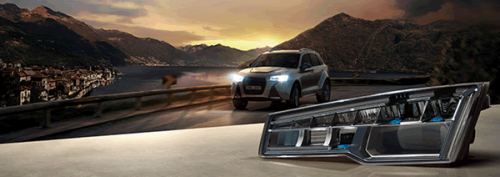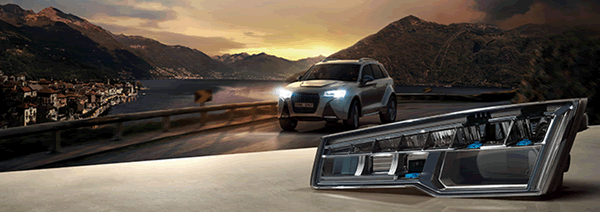1. Development History
Automotive lighting uses one of three technologies for headlights: LED, high-intensity discharge (HID) xenon or halogen. LED technology is disruptive in many markets and applications, gaining significant traction in the automotive market due to improved performance, low power consumption, design flexibility and cost savings.

Halogen lamps: Early cars mainly used halogen lamps, which have become popular since the 1960s. These lamps have lower cost, but have limited energy efficiency and service life (about 500 hours), generate large amounts of heat, and are gradually being replaced by modern technology.
Xenon lamps (HID): In the early 2000s, xenon lamps (HID) became popular. Xenon lamps provide higher brightness (2-3 times higher than halogen lamps) and longer service life (approximately 2000 hours), but they take longer to start up and cost more.
LED lamps: Since the mid-2000s, LED (light-emitting diode) lamps have gradually replaced xenon lamps. LED lamps have higher brightness (2-3 times higher than halogen lamps), longer service life (about 50,000 hours) and lower energy consumption (energy saving of about 80%). The widespread use of LED lamps has improved vehicle safety and lighting effects.
Laser lights and OLED: In recent years, laser lights and OLED (organic light-emitting diode) technology have also entered the market. Laser lights provide stronger brightness and long-distance illumination, while OLED technology allows for more flexible and innovative car light designs.
2. Future development direction
The future of LED headlights will develop in the following directions:
Intelligent: The intelligent lighting system will integrate advanced sensors and control technologies to adjust the brightness and angle of the lights in real time. For example, the adaptive high and low beam function will improve nighttime driving safety.
Autonomous driving compatibility: Headlights will be used as part of the autonomous driving system to transmit information and enhance interaction with the surrounding environment. For example, headlights may be used to indicate the vehicle’s driving intention or to warn other traffic participants.
Environmental protection and energy saving: Future LED lamps will further adopt environmentally friendly materials and technologies, improve energy efficiency, reduce battery consumption, and respond to global environmental protection requirements for electric vehicles.
Design Innovation: LED and OLED technologies will drive innovations in lighting design, including dynamic light effects and personalized light patterns, enhancing the visual appeal of vehicles.
3. Contribution of KONNRA connector
With the continuous advancement of LED lighting technology, KONNRA Connectors, as an automotive connector supplier , provides high-performance lighting connection solutions to ensure the reliability and stability of the system.
High performance: KONNRA connectors are made of high-quality materials and advanced technology, and can work stably in harsh environments such as high temperature, humidity and vibration, ensuring the normal operation of the lighting system.
High retention: KONNRA ‘s connector design life can be selected from TPA and CPA, etc., to enhance connector stability. Passed UL, IATF16949, ISO9001 and other international quality management system certifications to ensure product quality and stability. Reduce maintenance costs and improve reliability.
Compatibility: KONNRA connectors are compatible with a variety of LED lighting systems and are available in a variety of models and specifications to meet the needs of different models.
Customized service: We also provide customized service, design and produce according to customer needs to ensure that the connector is perfectly matched with the vehicle lighting system.
KONNRA connectors will continue to provide support for the development of vehicle LED lighting technology and help the automotive industry innovate and improve lighting technology.










